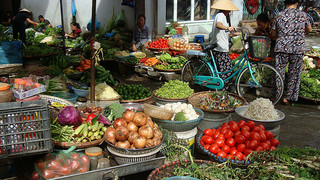 Asia has become increasingly integrated over the past decade as the region faced down the global financial crisis and subsequent euro zone crisis. But further efforts at cooperation could stall from regional leaders’ fears of contagion from greater integration, as shown by the euro zone experience, according to a new integration index published by the Asian Development Bank (ADB).
Asia has become increasingly integrated over the past decade as the region faced down the global financial crisis and subsequent euro zone crisis. But further efforts at cooperation could stall from regional leaders’ fears of contagion from greater integration, as shown by the euro zone experience, according to a new integration index published by the Asian Development Bank (ADB).
“Going forward, greater integration will be harder won as the remaining areas of cooperation are more complex,” said Lei Lei Song, principal economist in ADB’s Office of Regional Economic Integration. “Asia needs to avoid complacency and continue to work together in this post-crisis period.”
The index, printed in ADB’s latest Asian Economic Integration Monitor, shows the level of integration rising from a base level of 100 in 2001 to a peak of 233.27 in 2010, when the region was collectively bracing itself against the euro zone crisis.
Preliminary data for 2011 shows the level of integration tapering off slightly to 192.22, still much higher than in 2007 when the global financial crisis was just beginning.
During the crisis, cooperation stepped up a notch. ASEAN+3 countries acted in concert to expand the Chiang Mai Initiative Multilateralization, their regional financial safety net. India offered to finance a South Asian equivalent, and several countries expanded bilateral currency swap arrangements.
But there is still much work to be done to deepen integration, the report said. Tariffs have come down but other barriers to trade, such as border administration, continue to constrain greater integration.
Intra-regional trade in services also faces many impediments. The impact of regional trade blocs such as the upcoming Trans Pacific Partnership and the Regional Comprehensive Economic Partnership is still unclear. They could compete or they may provide the building blocks for a global trade agreement.
The report pointed to the need to unravel the profusion of overlapping free trade agreements. As of January 2013, Asia had 109 free trade agreements, up from only 36 in 2002, with another 148 in various stages of development.
“This plethora of agreements is both complex and costly for exporters to navigate and Asia should work to multilateralize the agreements to make the best bilateral agreements applicable to other trade partners,” ADB said in a media release.
More multilateralized agreements like the ASEAN Free Trade Area, which involves a growing number of countries in and outside of Asia, would increase global trade, and thus income gains, in the absence of a global trade deal, the report said.
Photo: Davil McKelvey




